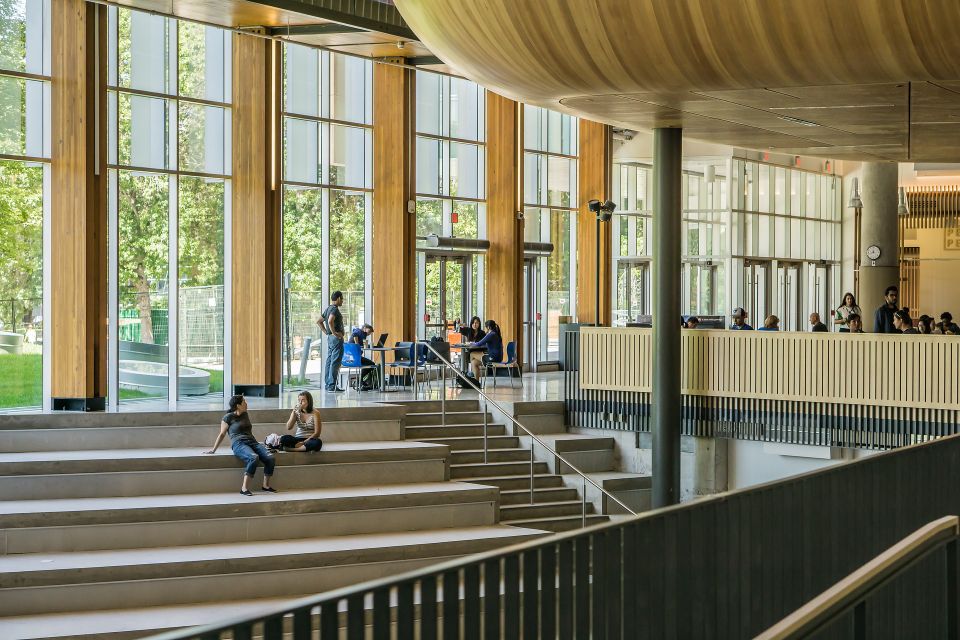
Designing a Website for Educational Institutions: Key Considerations
A website for an educational institution serves as a digital gateway for students, parents, faculty, and prospective students. It must effectively communicate the institution’s values, provide critical information, and offer easy access to resources. Here’s a comprehensive guide to designing a website for educational institutions, ensuring it meets the needs of all stakeholders and enhances the institution's online presence.
1. User-Centric Navigation
Educational websites need to cater to a diverse audience, including current students, prospective students, parents, and staff. Ensure your website features a user-centric navigation system that allows visitors to find relevant information quickly. Create clear and intuitive menus with well-defined sections such as admissions, academics, campus life, faculty, and contact information. Incorporate a search function to help users locate specific content.
2. Responsive and Mobile-Friendly Design
With many users accessing websites from mobile devices, a responsive design is essential. Your educational website should automatically adjust to various screen sizes and devices, ensuring a seamless experience whether accessed from a smartphone, tablet, or desktop computer. Mobile-friendly design improves usability and accessibility, making it easier for users to engage with your content.
3. Comprehensive Information and Resources
Provide comprehensive information about the institution’s programs, courses, faculty, and admission procedures. Include detailed descriptions of academic programs, degree requirements, and course offerings. Make sure to provide easy access to resources such as course catalogs, academic calendars, and faculty directories. This information should be current and regularly updated to reflect any changes.
4. Interactive Features and Tools
Incorporate interactive features to engage visitors and enhance their experience. Tools such as online application forms, course registration systems, and virtual campus tours can provide valuable functionality. Integrate a calendar of events to keep users informed about upcoming academic and extracurricular activities. These features help streamline processes and improve user engagement.
5. Visual Appeal and Branding
Your website should reflect the institution’s brand and ethos. Use a consistent color scheme, typography, and imagery that align with the institution’s branding. High-quality images of the campus, faculty, and students can create a welcoming atmosphere and give visitors a sense of the community. Ensure the design is visually appealing while maintaining a professional appearance.
6. Accessible and Inclusive Design
Accessibility is crucial in educational web design to ensure all users, including those with disabilities, can access and interact with the site. Follow web accessibility standards (such as WCAG) to include features like alt text for images, keyboard navigation, and screen reader compatibility. This ensures that your website is inclusive and complies with legal requirements.
7. Integration with Learning Management Systems (LMS)
If your institution uses a Learning Management System (LMS) like Moodle, Blackboard, or Canvas, consider integrating it into your website. This integration allows students and faculty to access course materials, grades, and assignments directly from the website. Providing a single sign-on (SSO) option can streamline access and improve user experience.
8. Secure and Reliable Hosting
Given the importance of the information on educational websites, secure and reliable hosting is essential. Choose a hosting provider that offers robust security features, including SSL certificates, firewalls, and regular backups. Ensure that the hosting solution can handle the traffic and data requirements of the website, providing a smooth and uninterrupted user experience.
9. Effective Communication Channels
Facilitate communication between the institution and its stakeholders by including various contact options. Provide clear contact information for departments, faculty members, and administrative offices. Integrate communication tools such as chatbots or live chat support to assist visitors with their inquiries in real time.
10. Regular Updates and Maintenance
Regular updates and maintenance are critical to keeping your educational website relevant and functional. Ensure that content is regularly reviewed and updated to reflect any changes in programs, faculty, or policies. Implement a content management system (CMS) that allows for easy updates and manage the site’s performance and security.
Conclusion
Designing a website for an educational institution involves balancing functionality, aesthetics, and accessibility to meet the needs of a diverse audience. By focusing on user-centric navigation, responsive design, comprehensive information, interactive features, and effective communication, you can create a website that supports the institution’s mission and enhances its online presence. At FireVibe Web Design, we specialize in developing custom websites for educational institutions, ensuring they are engaging, informative, and aligned with your institution’s goals. Contact us today to discuss how we can help you build a website that effectively serves your educational community.
